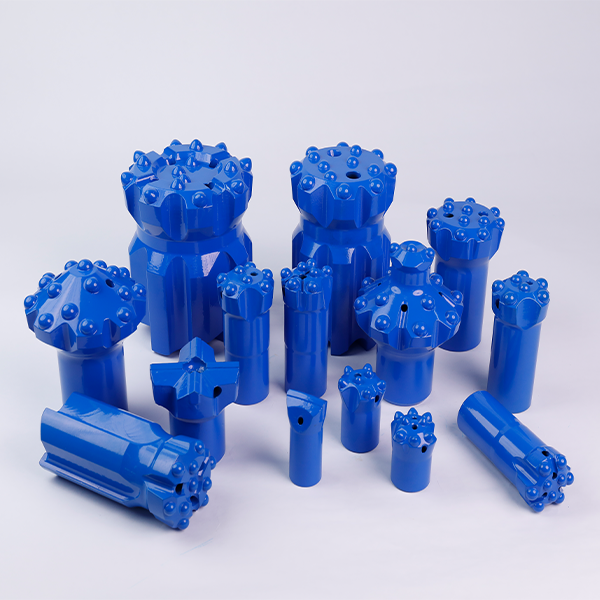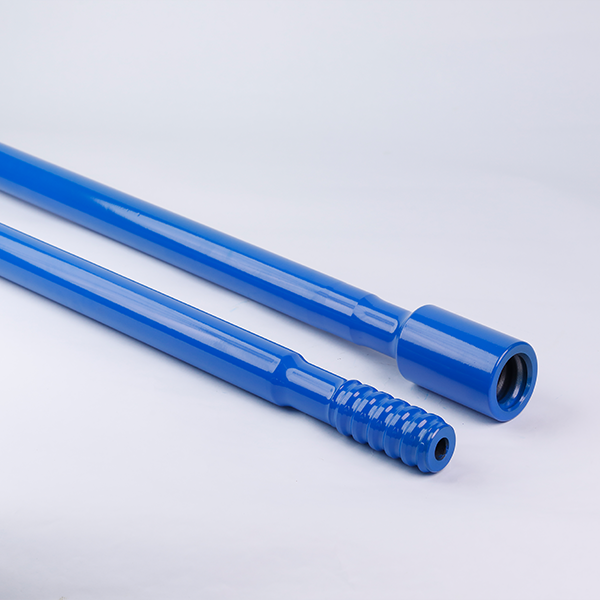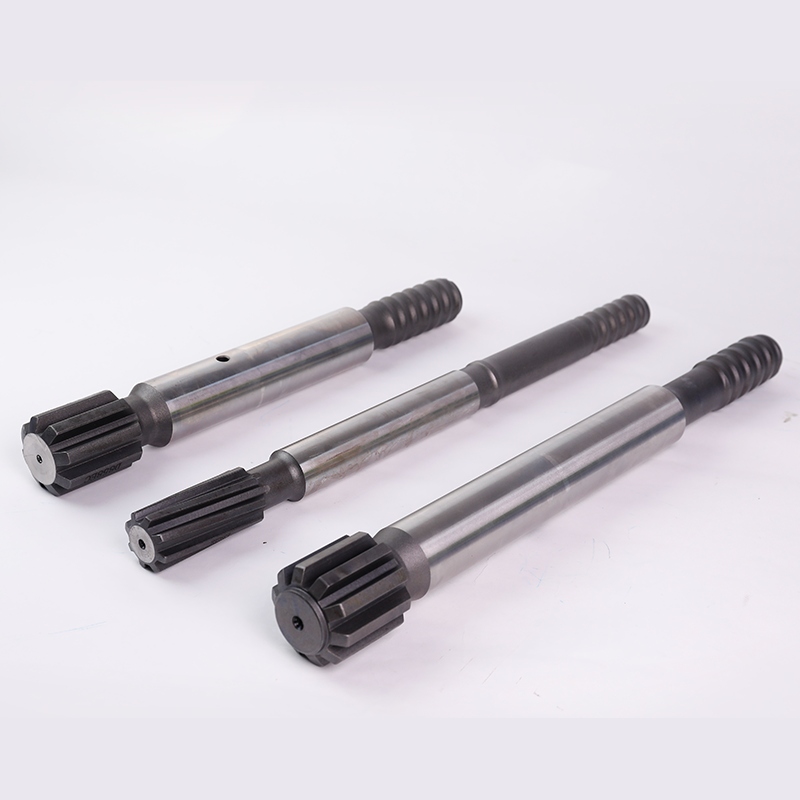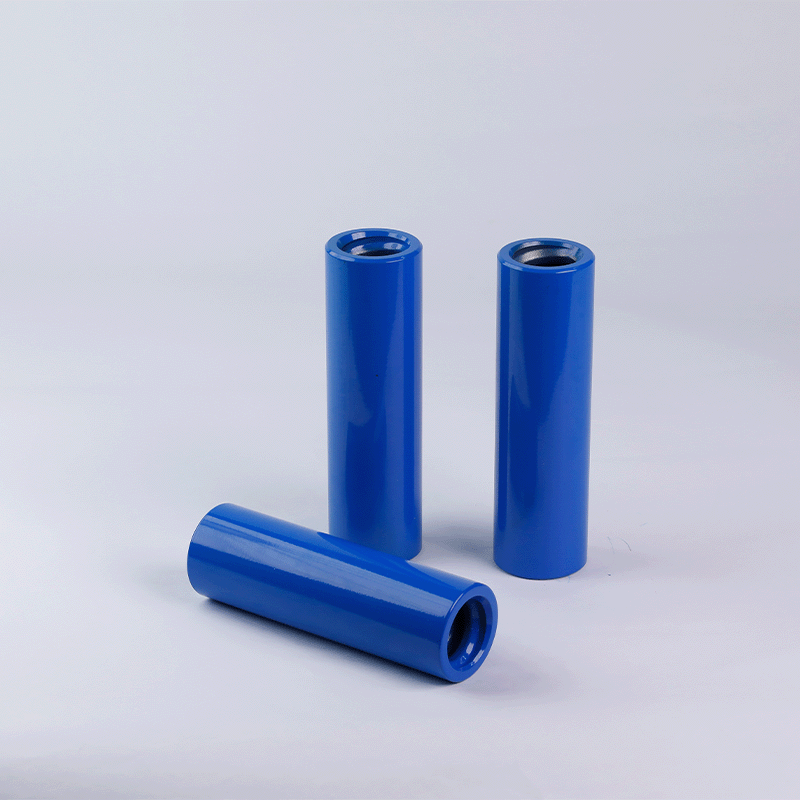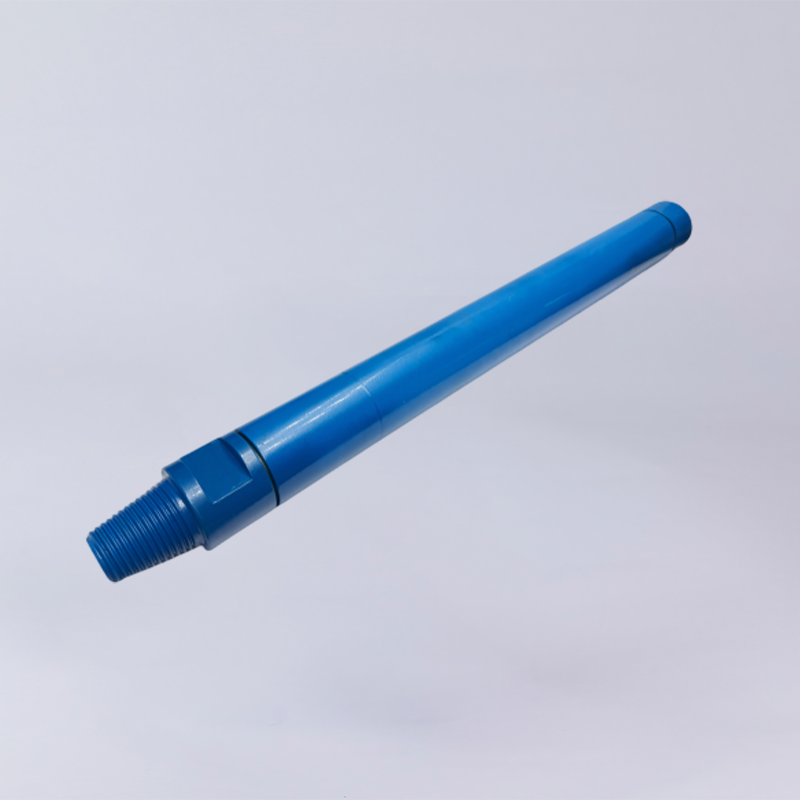In recent years, with the development of various infrastructure and mining projects, the engineering field has an increasingly urgent need for efficient and precise rock-drilling technologies. As a core component of modern rock-drilling engineering, DTH hammers, with their advantages of high drilling efficiency, cost savings, good hole-forming quality, and easy operation, are widely used in metallurgy, coal, mining, water conservancy, hydropower, highways, railways, national defense projects, and other fields.
Why can DTH hammers play a key role in numerous engineering projects? What application advantages do they have? This article will elaborate on the application advantages of DTH hammers. To delve deeper into why it plays an important role in the field of engineering, we first need to clarify its definition and essence.
Definition of the DTH Hammers
We have previously introduced what is the DTH drill bit.Today we introduce the definition of the DTH hammer.What exactly is a DTH hammer? It is a key component for DTH drilling rigs to achieve efficient rock breaking. Through cooperation with DTH drill bits, it transmits powerful impact energy deep into the rock formation, thus achieving the effect of deep rock breaking.
After clarifying the definition, we will further explore the structural design of DTH hammers - it is the combination of these components that lays a solid foundation for the efficient operation of the equipment.
Structure of the DTH Hammers
DTH hammers generally consist of an outer casing, a check valve, a spring, a gas distribution rod, a cylinder, a piston, a guide sleeve, an O-ring, a retaining ring, a front joint, an annular air chamber, an air outlet, etc.
The outer casing, as the external protective shell of the DTH hammer, on the one hand, provides installation support and physical protection for internal components; on the other hand, it forms an annular space with internal structures to guide the orderly flow of high-pressure gas, serving as the basic guarantee for the stable operation of the hammer.
The check valve controls the flow direction of high-pressure gas through its one-way conduction characteristic, only allowing gas to enter the hammer from the air inlet and preventing gas backflow.
The spring assists the check valve in working. When there is no gas pressure or insufficient pressure, it uses its elastic force to reset and close the check valve to maintain system tightness.
As the core moving part, the piston converts gas pressure energy into mechanical energy through interaction with high-pressure gas. Driven by the gas, it makes high-frequency reciprocating movements, generating a strong impact force that is transmitted to the rock through the drill bit to achieve rock-breaking operations.
After understanding the structure of DTH hammers, I will introduce their working principle.
Working Principle of the DTH Hammers
During the operation of DTH hammers, high-pressure gas serves as the power source to drive the internal piston of the hammer to make high-frequency reciprocating movements. The kinetic energy generated by the piston movement is transmitted along the internal structure of the hammer to the end of the drill bit, enabling the drill bit to obtain impact energy.
The carbide buttons inlaid on the head of the drill bit generate an impact force on the rock at the bottom of the hole under the action of the impact energy. When the impact force exceeds the compressive strength of the rock, the rock undergoes volumetric fragmentation, resulting in the drilling operation. At the same time, the gas with a certain pressure and flow rate carries the rock cuttings generated by fragmentation out of the hole, effectively preventing repeated rock fragmentation caused by rock-cutting accumulation and improving drilling efficiency.
Based on the above-mentioned principle, what specific advantages do DTH hammers demonstrate in practical applications? Let's analyze from multiple perspectives.
Application Advantages of the DTH Hammers
High-Efficiency Rock Breaking to Improve Drilling Efficiency
DTH hammers generate impact force through the high-frequency reciprocating movement of the built-in piston and transmit the impact force to the drill bit to drive the carbide buttons to break the rock through high-frequency impacts. Compared with traditional drilling devices, its drilling speed is significantly increased in corrosive formations. In projects such as coal mine roadways and metal mine mining, it can remarkably shorten the drilling cycle.
Energy Consumption Reduction and Cost Savings
The DTH hammer is located at the front end of the hole, and the impact energy acts directly on the drill bit without the need for the DTH drill pipe to transmit the impact energy, resulting in no energy transmission loss. Theoretically, the drilling speed is not affected by the hole depth, making it suitable for deep-hole drilling. This tool breaks through the energy loss pattern of traditional rotary drilling. When completing drilling tasks of the same depth, the energy consumption of DTH hammers is lower than that of traditional tools. This energy-saving feature not only helps enterprises reduce operating costs but also aligns with the development trend of green construction, reducing energy consumption and carbon emissions.
Unique Design to Ensure Hole-Forming Quality
The structural design and working principle of DTH hammers result in minimal disturbance to the hole wall during the drilling process. The hole wall after hole formation is smooth and flat, with the hole diameter deviation controlled within a very small range. This high-quality hole-forming effect provides a good foundation for subsequent operations such as anchoring and grouting, effectively improving construction efficiency and engineering safety, and reducing secondary repair costs and potential risks.
Wide Adaptability to Various Geological Conditions
DTH hammers come in a wide variety of types and can be flexibly selected according to different geological conditions. This tool has excellent geological adaptability. Whether it is high-hardness quartzite, low-hardness shale, or special geological environments such as frozen soil and fracture zones, DTH hammers can operate stably. By replacing the appropriate drill bits and adjusting the working parameters, it can meet the drilling needs under different geological conditions and demonstrate strong application potential in complex projects such as tunnel excavation and slope treatment.
Easy Operation and Labor Cost Savings
DTH hammers have a simple structure and an intuitive operation interface, with relatively low requirements for the professional skills of operators. This structure reduces labor costs and training cycles, and at the same time promotes the wide application and technological popularization of this tool in various engineering projects.
Large Hole Diameter and High Construction Efficiency
DTH hammers have obvious advantages in large-diameter hole formation. Traditional tool is prone to problems such as insufficient torque and rapid drill bit wear when the hole diameter exceeds a certain size. In contrast, DTH hammers with large hole-forming diameters are not only powerful but also can replace various types of large-diameter drill bits according to different geological conditions. Compared with small-diameter drilling tools that require multiple operations to achieve the same spatial effect, DTH hammers can significantly improve construction efficiency and shorten the construction period with the advantage of single-pass large-diameter hole formation.
Conclusion
From mining to railway construction, from water conservancy projects to national defense projects, DTH hammers have become an indispensable core component in modern rock-drilling engineering with their advantages of high efficiency, energy conservation, reliability, and easy operation. They continuously break through in technological innovation and application practice, improving the quality and efficiency of engineering construction in various fields. In the future, they will also play a key role in more engineering projects and promote rock-drilling technology to a new height.

